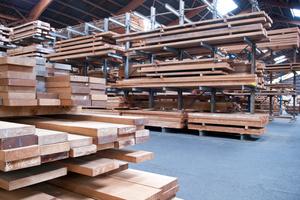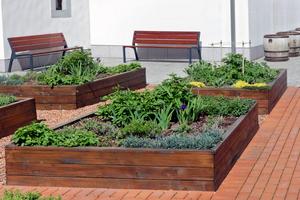When a customer asks for “pressure treated” lumber or plywood, they often mean they need wood that has been infused with a chemical preservative using a pressure treated process. And while we are quite familiar with the greenish hue of those treated products, we may be less well acquainted with the chemicals used that give treated wood extended life spans and their unique color.

Preservative treating lumber began over 150 years ago with the application of creosote to timbers used for construction of marine vessels and railroad ties. In the 1930s, Chromium Copper Arsenate (CCA) was developed followed by Pentachlorophenol (“Penta”) in 1950. Creosote, CCA and Penta are effective and remain in use, though are strictly regulated and their use limited to specific commercial applications. Concerns about the health, safety and environmental impacts of these chemicals prompted regulatory reform initiatives in the latter years of the 20th century and increased demand for alternative preservative treatments.
For residential and high-contact areas, today’s more common preservative treatments use chemical formulations incorporating borates and/or a variety of copper compounds. Borate and copper are both fungicides (inhibiting growth of mold and decay) and insecticides. The U.S. Environmental Protection Agency (EPA) identifies six chemical wood preservatives that are registered for use in the residential lumber and timber market. Today, though, we’re focusing on one of the more prevalent treatments used, Copper Azole.
What Is Copper Azole?
Copper azole, often abbreviated as CA, is a water-borne wood preservative that prevents mold, fungal growth and repels insects. Copper protects against termites, other wood-boring insects and fungus. Azole is also a fungicide and repels bugs that are copper resistant.
Copper azole is virtually odorless and CA-treated wood takes on a green tint that fades to a more natural golden wood color. As it ages, the treated wood weathers to gray.
Types Of Copper Azole Treated Wood
There are three types of copper azole solutions used to treat wood: type A, type B, and type C. The American Wood Protection Association (AWPA) differentiates between them due to the chemical makeup of the treatments. Their differences are outlined below.
Type A
Type A is also known as CBA-A. It contains copper, boric acid, and tebuconazole. CBA-A was the first of the copper azole treatments to be developed and approved in 1995.
Type B
Type B is also known as CA-B. It contains higher copper and tebuconazole concentrations, but does not contain boric acid. It was approved for use in 2002 and slowly took over use in place of CBA-A.
Type C

Type C is known as CA-C. It includes copper and two types of azole. CA-C was approved in 2009 and is currently the industry standard.
One increasingly common form of CA-C is Micronized Copper Azole (MCA). The primary difference of MCA compared to CA is that the copper in the CA solution chemically bonds to the wood. By contrast, the smaller, micronized copper particles in MCA allow the copper to be absorbed into the wood cells. Additionally, MCA-treated wood maintains more of its natural color and causes less corrosion to fasteners used with the wood, especially aluminum.
Is Copper Azole Safe?
A frequent concern of homeowners and parents is whether or not treated wood is safe to use for garden beds or in areas where children and pets play. The short answer is, yes.
CA and MCA chemicals are not absorbed through the skin. Children under 8 might experience abdominal pain, nausea or an upset stomach if they were to have significant contact with the wood three or more times a week and then ingested most of what accumulated on their contacted skin.
Tests for chemical leaching in raised bed gardens studies have found that copper can migrate from copper azole treated wood into the soil immediately adjacent to the planter sides. However, copper levels were not higher in roots or tubers of radishes, carrots or potatoes compared to those from beds constructed of untreated wood. Studies have also found that the more organic matter (compost) present in the soil, the less preservative chemical migration occurs.
Uses For Copper Azole Treated Wood
Copper Azole’s lauded safety supports its wide use throughout the United States and Canada.
Depending on the concentration of CA or MCA used, treated wood is used in above-ground and ground-contact projects as well as freshwater and saltwater applications.
Some uses for copper azole-treated wood include:

- Structural lumber
- Plywood and siding
- Fences, posts, and pilings
- Utility poles
- Garden boxes
- Playground structures
- Decks, docks, and boardwalks
- Gazebos
- Pedestrian bridges
- Railways
Copper azole treatments can be applied to these select types of wood:
- Southern, Red, Ponderosa, Caribbean, Radiata, and White pines
- Hem- and Douglas firs
- Western Hemlock
The species most commonly treated will vary by region. Note that some Northern and Western wood species require incising to help improve chemical penetration into the wood.
About Curtis Lumber & Plywood
Curtis Lumber and Plywood is an independently owned and operated wholesale lumber and plywood distributor, founded in 1957. We’re located in Springfield, Virginia, and sell exclusively to leading lumber dealers in the mid-Atlantic region of the United States.
If you are a lumber retailer and have questions about treated wood products or need to place an order by the trailer load, unit or piece, call Curtis Lumber & Plywood. 703-972-1947.

